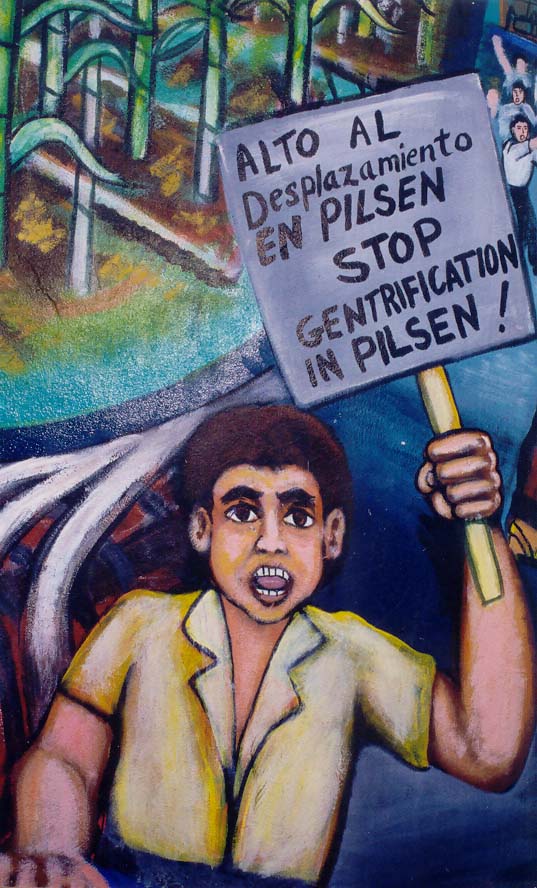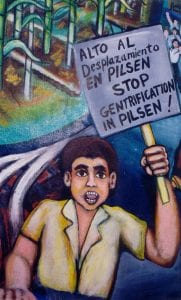“Mixed income” is the hot phrase in housing developments and neighborhoods across the country these days.
It is the bedrock of the Hope VI plan for redevelopment of public housing nationwide. And it is the goal of private developers and urban planners taking advantage of government subsidies and aiming to create diverse communities where people of all different backgrounds socialize, educate, and inspire each other.
In theory, it seems like a great idea. But what exactly are mixed-income communities, and to what extent do they really even exist?
I explored this question for a recent story in The Chicago Reporter, with a focus on “naturally occurring” mixed-income communities as opposed to intentional public-housing redevelopments.
The results of the Reporter‘s data analysis and my on-the-ground reporting did not paint a cheery picture. There seem to be relatively few long-standing, stable, truly mixed-income neighborhoods.
Those that do exist ironically were created largely through redlining and segregation practices of the past, when higher-income African-Americans still had little choice of where to live.
By far the most common mixed-income situation is the gentrifying neighborhood, where there may be a great diversity of incomes and ethnicities, but that is because lower-income, often minority populations are being forced out by rising property values as upper-income residents move in.
Pilsen, a largely Mexican immigrant Chicago neighborhood where I have done much reporting, is one such example. It boasts a huge diversity of incomes and ethnicities…yet as this mural shows, there is much fear and resentment regarding the quickly rising property values.
Not surprisingly, this dynamic creates suspicion, tension, resentment and fear more than the idyllic new friendships and cultural exchanges one might hope for. Police beat meetings and homeowners associations often become insidious tools in these neighborhoods, with newer wealthier residents complaining about and asking for law enforcement action against teens hanging out on the corner, apartments “over-crowded” by immigrant families, late-night basketball games, unlicensed street vendors, and the like.
One of the common arguments in favor of intentional mixed-income communities is that lower-income residents will learn from their higher-income neighbors — that positive role models will be created; that children raised by single mothers will find father figures nearby.
But the idea that people with higher incomes have better parenting skills or keep their yards cleaner or generally have something to teach the poor is highly patronizing and insulting to many lower-income residents.
The results of mixed-income public housing developments nationwide have been spotty. There are surely some success stories. But there are also many reports of tension, discrimination, conflicts, and misunderstandings between lower income and upper income residents, especially in hot property areas where the market rate tenants might earn hundreds of thousands of dollars a year while their public housing neighbors make under $10,000.
Reporting on the redevelopment of Chicago’s famous Cabrini Green project several years ago, public housing residents told me they didn’t feel welcomed by their new neighbors. Some of the Cabrini Green high rises were torn down , so many residents were displaced. Others were expected to integrate into a new mixed-income community.
Cabrini Green is located on what is now very valuable property just northwest of downtown. After its redevelopment started, a beautiful park and upscale strip mall were built nearby. But residents said they felt they were stared at suspiciously when they ventured into the new Starbucks, not to mention that a $4 coffee beverage strained their budget, making it difficult to mix with their new neighbors at the local coffee shop even if they had wanted to.
Nonetheless, it is at least encouraging that city planners and many regular folks do see value in the social potential of mixed-income neighborhoods and the diversity the concept implies.
Rather than giving up on the whole idea, I can only hope there is a way to remove the elements of patronizing attitudes and financial self-interest from the equation and throw government and private resources and community effort into building stable neighborhoods with affordable housing, after-school programs, and other resources that encourage and enable the organic creation of mixed-income, diverse neighborhoods.







Comments